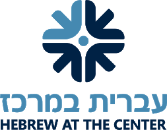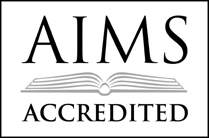Comparing Communities: Kindergarteners Engage in In-Depth Study of Social Insects
May 24, 2016 by
This year in Kindergarten, our Project Work curriculum was intentionally designed to use the theme of Community. In the second semester, we focused on comparing our community to those of social insects including ants, bees, and wasps. We specifically chose social insects because they naturally connect to humans as they share common characteristics that include sharing a common nest site, caring for the young, overlapping generations, and the division of labor.
We first looked at the roles and jobs of social insects and compared them to our school community. The children shared many beautiful connections. For example, one class connected bees making honey with their class making challah for Shabbat. Another class identified G’veret Reem and Mrs. Davis as the Queens of the hive, “because they take care of all of us,” and Pre-Kindergarten students with the larvae, “because they are really little.” Another student connected the job of class door holder to a wasps’ wings by sharing, “When the wasps do this [flap their wings] onto the larvae, it’s just like when the door holder opens the [classroom] door because it’s going to be colder.”
We then went on to represent these roles and jobs in several different languages through the use of a variety of materials. During Project Work, students had authentic opportunities to practice and reinforce academic skills learned during Foundations (Math, Science, Writer’s Workshop, Literacy Studio, and Sadnah (Art Studio). Throughout our study of social insects, children developed an understanding of different types of perspectives/points of view, created multiple drafts, and honed critical thinking skills as they gathered information. Beyond applying academic skills, students developed higher-level thinking skills as they used materials, synthesized knowledge, and collaborated with peers and adults to create the different colonies, hives, and nests that their class was studying. Students from each class had the opportunity to present their knowledge at a Kindergarten Town Hall Meeting that focused on the characteristics of social insects.
One class created a beehive using hexagon templates and wicky sticks. They added the members of the bee colony including the life cycle stages, worker bees, drones, guard bees, and the queen bee. To make the South Campus, the children examined an actual floor plan of the South Campus that was used by the architects, then drew their own version on poster board using rulers. They took photographs of the various community members on the list they had drafted, cut them out and glued them to the areas of the school where they learn and work. They added details such as different areas of the playground, the carpool line, and the cubbies in the Kikar. Finally, they added yarn to connect members of both communities together. The final touch was a key so that people could understand how the two communities were connected.
In another class, inspired by the photography of Andrey Pavlov, who specializes in taking pictures of ants, the children took photographs of the evolution of their representative clay ants that they built through a process of multiple drafts and review. In addition to photographing their individual clay ants, the children worked in small groups to create a collaborative photograph. The children were challenged to create and represent one of the four characteristics of social insects (many generations, work to help the colony, share a common nest site, and take care of young). They created scenes using the colony that the class had created along with other materials for their photo shoot. In order to prepare to physically build their scenes, the children drew one draft together of what they wanted to depict. Just as with their individual photographs, the children used their ants, the colony, and any other materials to create their scenes.
Another project examined how to look at things from different perspectives. The class began by reading the books Zoom and Re-Zoom (both books without words) created by Istvan Banyai. We read the books backwards so that we zoomed into the pictures to capture more details, then discussed the perspective that ants have on how they see the world. The children had many different theories. Some of the children thought that ants see the world the exact same way that we do, just smaller. Other children thought that they see everything smaller, yet others thought the opposite and that ants see things magnified. Using black paper and colored tape, the children created collages. After making their collages, each child took a small, laminated white paper frame, and placed it somewhere on their original collage. Next the children were challenged to recreate the part of the collage that they framed – keeping in mind that everything would be bigger since they were transferring the small space to a full sheet of paper. Zooming in like this gives the children an idea of how things may look differently from an ant’s, or a different person’s, perspective.
We then connected our research on social insects to an authentic need of our school garden by intentionally choosing flowers and plants that would benefit the pollinators we studied. Before planting our garden, we mapped and designed different spaces, each student taking on a different responsibility that mirrored roles of social insects. We then reinforced the intergenerational aspects of social communities (insects and humans) by inviting parents and students to plant together.
We invite you to see our photo album from the Kindergarten Bayit Patuach (Open House), which featured performances, projects and displays of the children’s Hebrew, Judaic Studies and General Studies learning.






